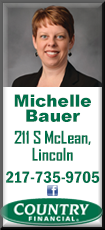|
Trump supporters’ election test: a
movement or a moment
 Send a link to a friend
Send a link to a friend
 [November 03, 2018]
By Peter Eisler, Ned Parker and Julia Harte [November 03, 2018]
By Peter Eisler, Ned Parker and Julia Harte
SPRINGFIELD, Mo. (Reuters) - In rally after
rally, President Donald Trump exhorts throngs of red-hatted supporters
to treat next week’s congressional elections as a referendum on Trumpism
and the grass-roots movement that swept him to power.
“You’re voting for me in 2018,” Trump told a raucous crowd in a late
September appearance for Republican candidates in Missouri. “You’re
voting for me.”
The plea speaks to the challenge facing the president and his
supporters: With Democrats threatening to take over the House of
Representatives and key governors’ offices, the success of his
legislative agenda over the next two years hinges on whether he can
energize his backers around candidates who are not named Trump.
This year’s election is the first real test of whether the coalition
behind Trump’s “Make America Great Again” slogan can evolve from a
diffuse, personality-driven following to an organized political force
able to boost candidates outside his electoral strongholds.
Reuters surveyed officials from 18 Republican campaigns, analyzed data
from polling partner Ipsos and interviewed dozens of candidates,
strategists and Trump supporters to assess the reach and influence of
the president’s self-styled “MAGA Movement” ahead of the elections.

United behind Trump’s “America First” agenda of tighter borders,
protectionist economic policies and unilateralist diplomacy, the MAGA
coalition swept up 2016 voters who felt ignored by Washington and
welcomed Trump’s vows to upend its institutions. Today, it attracts Tea
Party conservatives, evangelical Christians, gun rights advocates, and
working-class voters drawn to Trump’s outsider persona.
Trump’s populist base is firmly established in the mostly southern and
western parts of the country where he’s most popular. MAGA supporters
turn out in force for Trump-backed candidates in those areas, boosting
them in opinion polls and volunteering for their campaigns. In some
cases, they have taken control of state party machines, harnessing their
infrastructure and money for candidates in Trump’s mold.
But outside of Trump’s strongholds, the influence of MAGA supporters is
more pocketed, especially in Rust Belt states, such as Pennsylvania and
Ohio, and the upper Midwest. So, while Trump loyalists can tip the
scales in specific U.S. House districts in those areas, they have done
less to boost Trump-backed candidates in statewide contests for governor
and U.S. Senate.
With no central organization and little regard for Republican
hierarchies, MAGA enthusiasts agitate largely through social media and
Internet forums, such as Facebook and Reddit, the social networking
site. In dozens of interviews, Reuters found their willingness to back
local campaigns often has less to do with party loyalty than with
helping Trump.
“The 2018 elections will be a test of how popular Trump is, how popular
his policies are, did we organize well or do we need to do better and
improve things for 2020,” said Scott Presler, a MAGA activist in
Virginia Beach, Virginia.
Among the 18 Trump-endorsed Republicans running for Senate or governor
in states where Trump won the presidential race by more than 10
percentage points in 2016, more than 80 percent are ahead in opinion
polls, based on data aggregated by RealClearPolitics and 538.com,
non-partisan websites that gather polling from multiple sources.
Yet among the 16 Trump-backed candidates for Senate or governor in
states where he won by fewer than 10 points, just four – a quarter – are
polling ahead.

`LEANING ON THEIR SHOVELS'
The challenge is starkest where Trump-backed candidates are trying to
flip governors’ offices and Senate seats held by Democrats, Reuters
found.
In states where Trump won by double digits in 2016, two of the five
candidates he has endorsed in races for Democrat-held Senate and
governors’ seats are leading in the polls, and two others are within a
few points. But in states where Trump won by less than 10 points, all
six candidates he has endorsed in races for Democratic seats are behind
in recent polls, five of them by at least 10 points.
Through much of the campaign season, Trump supporters in many places
were “leaning on their shovels,” because they were over-confident of
victory, Steve Bannon, a former Trump adviser and campaign strategist,
told Reuters.
MAGA loyalists have grown more energized in recent weeks, realizing
Trump’s agenda “would come grinding to a halt” if Democrats capture the
U.S. House, Bannon added. “You've seen the establishment and the
hardcore anti-establishment in the Trump base all come together.”
The president remains enormously popular with that base - Reuters/Ipsos
polling gives him an 84 percent approval rate among Republicans - and
more than two-thirds of those who voted for him in 2016 say they
identify with MAGA ideals.
Yet their views diverge on what MAGA means: while more than half equate
it with strengthening the economy and tightening borders, upwards of a
quarter say MAGA simply means “Donald Trump.” (Graphic: https://tmsnrt.rs/2RuhKTv)
That raises questions about the future of MAGA once Trump leaves office.
A TEST IN TENNESSEE
On Oct. 1, Trump whipped up a crowd of nearly 10,000 at a rally
supporting Marsha Blackburn’s U.S. Senate campaign in Tennessee, where
Trump won in 2016 by 26 points.
“A vote for Marsha is really a vote for me and everything that we stand
for,” he told the audience.
Soon after, opinion polls showed Blackburn, a U.S. House member, pulling
ahead of her Democratic opponent, former two-term governor Phil Bredesen.
“We knew President Trump would be an extraordinary surrogate in East
Tennessee," Republican Party spokesman Garren Shipley told Reuters.
Bredesen’s campaign dismissed the polls: “The only poll that matters is
on election day,” said spokeswoman Alyssa Hansen.
On Oct. 10, the president held another rally 500 miles (800 km) away
with a similar message for Lou Barletta’s U.S. Senate campaign in
Pennsylvania, where Trump eked out a one-point victory in 2016. “I need
you,” Trump told the crowd. “Vote for Lou!”
It was Trump’s second rally with Barletta since August. But Barletta,
also a U.S. House member, trails incumbent Democratic Senator Bob Casey,
and has remained behind by more than 10 points in polls.
[to top of second column]
|

Supporters of U.S. President Donald Trump attend a rally in Las
Vegas, Nevada, September 20, 2018. REUTERS/Mike Segar

The divergent fortunes of Blackburn and Barletta reflect the
challenge in harnessing Trump’s MAGA coalition.
Following Trump’s victory in 2016, Tennessee’s Republican
establishment embraced his agenda and welcomed his supporters. Many
are volunteering now for Blackburn and other Trump-backed
candidates, helping with phone banks, neighborhood canvassing and
other get-out-the-vote efforts.
The state party leaders who didn’t support Trump initially have
“figured out they have to help him,” says Todd Fowler, who heads the
local party in Johnson City, Tennessee, and serves on the state
party’s executive committee. “Tennessee likes what he’s doing.”
In Pennsylvania, where Trump’s 2016 win was razor-thin, his support
is mostly concentrated in rural and working-class areas. Polls show
Trump’s pick for governor, Scott Wagner, running well behind
incumbent Democratic Governor Tom Wolf.
Trump is drawing people to congressional campaigns in Pennsylvania,
but they are coming “very tentatively,” says Eugene Sorrentino, 76,
a retired power company technician and member of the local
Republican committee in Erie, Pennsylvania.
Sorrentino recently staffed a welcome tent set up by the party at a
county fair and “all I heard was requests for Trump paraphernalia,”
he said. The congressional races “weren’t on their agenda,” he
added.
'TRUMP BUMP'
In Trump’s strongholds, his ability to help candidates goes beyond a
bounce in the polls. Nearly all the Trump-backed campaigns contacted
by Reuters reported a surge of volunteer activism – a “Trump bump” –
after the president’s endorsement.
In Western Pennsylvania, a corner where Trump is enormously popular,
U.S. Representative Mike Kelly says his campaign relies heavily on
MAGA volunteers. Kelly’s district, redrawn this year, includes
counties where Trump won by as much as 20 points in 2016, according
to PlanScore.org, a nonpartisan group.
Trump provides “that shot of adrenaline you need from time to time,”
Kelly told Reuters as he prepared to join the president for an Oct.
10 rally in Erie.

One engine for turning out Trump’s base in his stronghold regions is
America First Action, a “Super PAC” allowed to spend unlimited
amounts of money on elections.
The group has spent more than $26 million on phone messaging and
advertising in five battleground Senate races – Arizona, Montana,
Indiana, Missouri and North Dakota – and across 11 congressional
districts in Texas, Minnesota, Maine, Michigan, West Virginia, New
York, Pennsylvania, Nevada and North Carolina.
It is run by Trump loyalists and relies on big donations from
Republican Party stalwarts, including casino magnates Sheldon
Adelson and Steve Wynn and mining engineer and businessman Robert
Murray.
In an Oct. 1 memo, White House political director Bill Stepian
advised congressional campaigns that the best way to capture MAGA
support is to align “closely, clearly and boldly” with Trump. The
president, he wrote, is “ready, willing and able to put the power
and force of his coalition to work for the candidates with whom he
stands, and who stand with him.”
At the national level, Republican Party officials have fallen in
line and embraced the president, routinely echoing Trump’s
nationalist campaign themes. But for candidates in areas where the
president doesn't dominate the electorate, embracing Trump has mixed
success.
In Florida, where Trump prevailed by one point in 2016, he endorsed
Republican gubernatorial candidate and die-hard supporter Ron
DeSantis before the party primary. But now, in a state that hasn’t
elected a Democratic governor in 20 years, DeSantis is polling
slightly behind in the general election contest against Andrew
Gillum, the Democratic mayor of Tallahassee.
Some Republican candidates in areas with moderate voters who view
Trump less favorably have steered clear of the president, a Reuters
analysis found last month.

PARTY TAKEOVER
MAGA supporters have become a force in many state party offices,
including some states outside the president’s established southern
and western strongholds.
In Ohio, a swing state where Trump won by eight points in 2016, the
state Republican Party selected Jane Timken, a Trump friend and
loyalist, to take over as chairwoman in the wake of the election.
In Nevada, where Democrat Hillary Clinton won the 2016 presidential
vote, the state Republican Party has launched weekly events, such as
MAGA Mondays and Trump Tuesdays, to attract the president’s
supporters.
Rochelle Swanson, 30, a MAGA activist in Reno who began posting
pro-Trump articles and interviewing local Republican candidates on
social media, was asked by a party official in July to help with
voter outreach. She now aligns her social media and canvassing with
the party’s messaging, she says, and “there is good unity
happening.”
Yet even as MAGA supporters have become woven into the fabric of the
Republican Party, many acknowledge it will be a challenge to
preserve their coalition and continue shaping U.S. politics once
Trump leaves office. In a Reuters/Ipsos poll earlier this month,
more than a quarter of Trump voters said they did not know who would
carry Trump’s vision if he leaves politics.
“I don’t think anybody could take Trump’s spot,” said Jeremy
Messina, a MAGA activist in upstate New York who runs a political
advertising media company. “I don’t see it.”
(Reporting by Julia Harte, Ned Parker and Peter Eisler; Additional
reporting by Chris Kahn, Jason Lange and Nathan Layne; Editing by
Ross Colvin)
[© 2018 Thomson Reuters. All rights
reserved.]
Copyright 2018 Reuters. All rights reserved. This material may not be published,
broadcast, rewritten or redistributed.
Thompson Reuters is solely responsible for this content. |